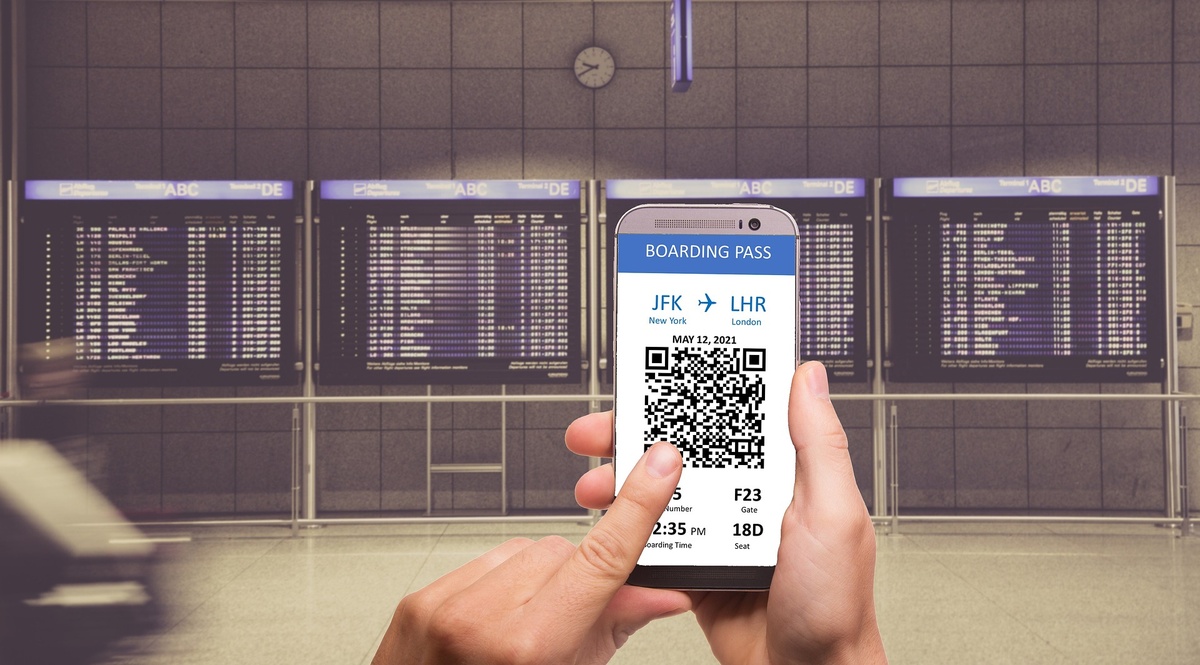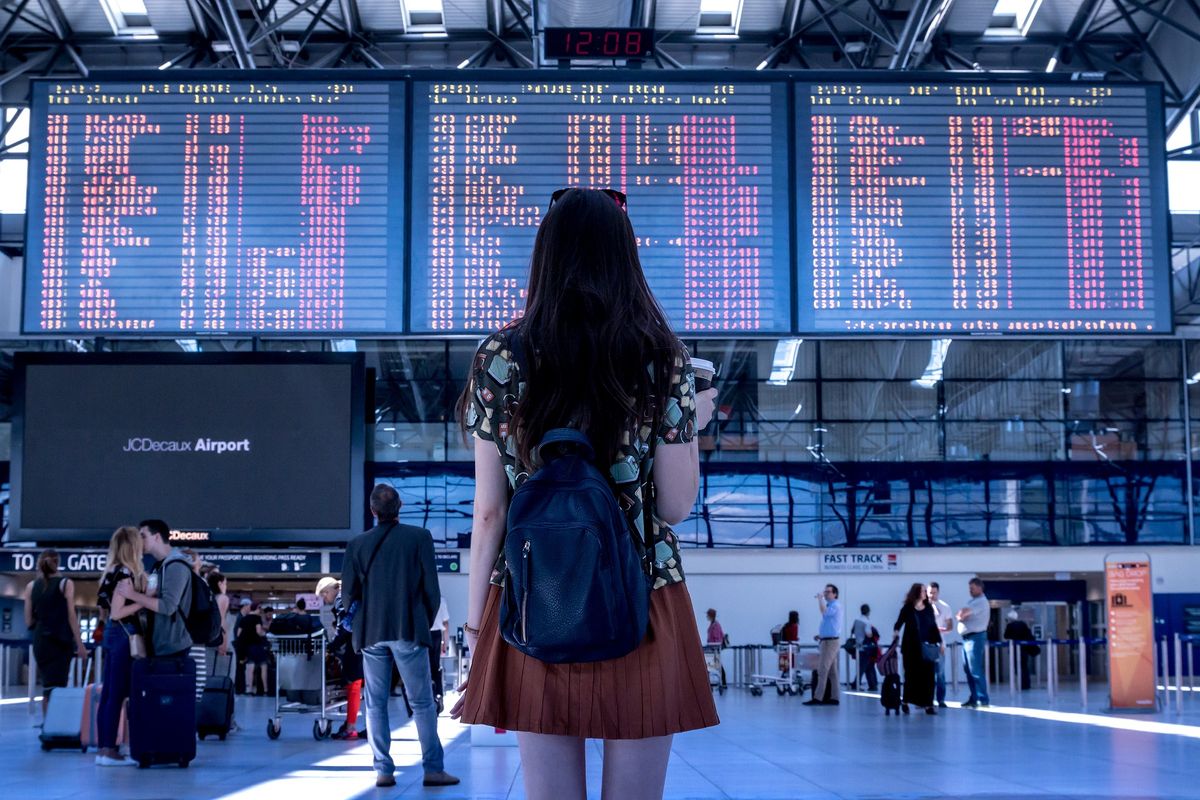
The Ultimate Guide to the Boarding Pass for UK Travellers
For many UK travellers, the journey to a seamless experience begins with their pass's essentials. Whether you're a seasoned traveller or planning your first flight, this guide will take you through everything from obtaining a printed version of the boarding ticket to being able to add it to your Apple or Google wallet with the digital conveniences of today's travel tech.
What Are Boarding Passes: Understanding Your Boarding Ticket
When you examine your boarding pass, also known as a boarding ticket, whether it's a traditional paper version or a digital format displayed on your smartphone, you'll notice several crucial pieces of information. The boarding time is perhaps the most immediate of these details, indicating when you should be at the gate and ready to board the aircraft. The gate number itself closely follows this, where you need to be within the often vast expanse of the airport.
Your flight number, a unique identifier for your specific journey, is also featured on the ticket. This allows you and the airline staff to confirm that you are indeed booked on the correct flight. The seat assignment is another vital piece of information, indicating exactly where you'll be seated on the aircraft. This can be particularly important for those who prefer aisle seats or window seats or those travelling with family and wishing to sit together.
Your boarding pass may include additional details, such as the terminal number, which is crucial in larger airports with multiple terminals. It might also display your frequent flyer number (if you've provided this to the airline), ensuring you receive the appropriate loyalty points for your flight.

Image by JESHOOTS-com from Pixabay.
How Do I Get My Boarding Pass?
There are two ways for passengers to obtain their boarding passes; a printed version and a digital one. The printed boarding ticket can be delivered by airline staff or a self-service kiosk when passengers check in at the airport.
But online check-in has revolutionised how passengers receive their passes, offering a hassle-free approach to kickstart your travel experience. Available through the airline's official website or their dedicated mobile app, online check-in usually opens 24 hours before your scheduled departure and remains available up to an hour before the flight time. This method not only saves you time but also allows you to select your preferred seat, add any additional services, and review your travel details at your convenience before receiving your boarding ticket.
How Do I Get My Boarding Pass Online?
The process is straightforward. After completing the online check-in procedure, airlines typically allow you to download the pass directly to your device or send it to your email. This digital pass can be used at security checkpoints and boarding gates, eliminating the need for a printed boarding pass.
Do I Need to Print My Boarding Pass?
Digital passes, accessible through airline apps or emailed directly to passengers, offer a seamless travel experience. These passes can be saved on your smartphone and presented at security checkpoints and boarding gates, eliminating the need for paper. This not only streamlines your airport experience but also contributes to environmental sustainability by reducing paper waste.
Despite the convenience of digital passes, it's crucial to familiarise yourself with your airline's specific requirements. While most major airlines fully support digital passes for domestic and international flights, there are exceptions. Some budget airlines, such as Ryanair, require passengers to print their passes before the flight.
In addition to airline policies, personal preference plays a significant role. Some travellers find peace of mind in having a printed copy of their pass, either as a backup to their digital version or due to limited battery life on their devices. Airports equipped with charging stations and Wi-Fi can alleviate these concerns, but being prepared for any scenario is always a good strategy.
How to Add Your Pass to your Apple or Google Wallets
Adding your boarding ticket to a digital wallet means that all the essential details of your flight are just a tap away, stored securely on your device. This method not only declutters your physical wallet but also ensures that your pass is always accessible, even when offline or in airplane mode. The digital pass in your wallet app displays dynamic information, including real-time updates on gate changes, departure times, and even which baggage carousel to head to upon arrival.
The process of adding a pass to your digital wallet is straightforward and user-friendly.
After completing online check-in, most airlines offer the option to download the pass directly to your device. For iPhone users, a button to Add to Apple Wallet typically appears on the screen or within the airline's app or confirmation email. Similarly, Android users can save their pass to Google Wallet with just a few taps. Once added, the boarding ticket appears as a digital card, complete with a barcode or QR code that can be scanned at airport security checkpoints and boarding gates.
This method of storing passes is not only convenient but also aligns with growing environmental consciousness among travellers. By reducing the reliance on paper, digital boarding passes contribute to sustainable travel practices, cutting down on waste and conserving resources. Furthermore, airlines and airports support this eco-friendly option by providing dedicated scanners that read digital barcodes and QR codes directly from smartphone screens.

Image by frank2016wang from Pixabay.
Can You Print Your Boarding Pass at the Airport?
The option to print your pass at the airport remains a viable choice for travellers, providing a nice bridge between traditional travel practices and the modern, digital era. While the shift towards online check-in and digital passes has streamlined the pre-flight process for many, the availability of printing services at the airport ensures that all passengers, regardless of their preference or access to technology, can navigate their journey with ease.
Printing a boarding ticket at the airport can be accomplished in two main ways: at the airline's check-in desk or through self-service kiosks. The check-in desks are manned by airline staff who can assist with the check-in process, baggage drop, and any other travel-related inquiries. This option is particularly beneficial for those needing additional assistance, such as elderly passengers, those with special needs, or travellers with complex itineraries.
On the other hand, self-service kiosks offer a faster, more efficient way to print your boarding ticket. These kiosks are typically located in the airport's departure hall next to the respective airline’s check in desks and allow passengers to check in, choose their seats, and print passes without direct interaction with airline staff. The intuitive interface of these kiosks makes them accessible even to those who may not be tech-savvy, providing clear instructions and prompts to guide users through the process.
It's important to note that while the convenience of printing your pass at the airport is undeniable, some airlines, especially low-cost carriers, may impose a fee for this service. These charges are part of a broader strategy to encourage passengers to check in online and arrive at the airport ready to fly, thereby reducing the workload for airline staff and streamlining operations. Fees can vary significantly between airlines, so it is advisable to review your airline's policy before you travel. This information is usually readily available on the airline's website or through their customer service channels.
For passengers opting to print their pass at the airport, it's wise to arrive with ample time before your flight. This precaution allows for any unforeseen delays, whether they be long queues at the check-in desk or technical issues with self-service kiosks. Ensuring you have enough time not only for printing your pass but also for security checks and boarding can make the difference between a stressful rush to the gate and a relaxed start to your journey.
Understanding Abbreviations
Whether printed or digital, passes are packed with information essential for your journey. That being said, the compact format often means that this information is presented in abbreviations, which can be puzzling for even seasoned travellers. Understanding these abbreviations can make it easier to understand your pass, ensuring you're well-informed and prepared for your flight.
One of the most common abbreviations is FLT or FL, which stands for Flight Number and identifies your specific flight. GATE is straightforward, indicating the gate from which your flight will depart. BRD TIME or BT refers to Boarding Time, the time passengers are expected to start boarding the aircraft, which is crucial for timely departure.
The SEAT abbreviation denotes your assigned seat on the plane, including the row and seat number, e.g., 12A. PNR or LOC (Passenger Name Record or Locator) is a unique code linked to your flight booking that is vital for checking in and managing your reservation.
ETKT stands for Electronic Ticket, a digital version of your ticket confirming your booking. SEQ or BP number (Sequence or Boarding Pass number) is a unique identifier for your pass that is used for tracking and security purposes.
DEST indicates your destination airport, often shown by its IATA airport code, such as LHR for London Heathrow or JFK for New York's John F. Kennedy International Airport.
Familiarising yourself with these abbreviations can remove some of the mystery from your travel experience, allowing you to navigate the airport and boarding process with greater ease and confidence. Knowing what each abbreviation stands for ensures you are fully aware of your flight details, making for a smoother, more enjoyable journey.
Frequently Asked Questions About Boarding Pass Information
How many hours before my flight should I arrive at the airport?
For international flights, aim to arrive at least 3 hours before your flight. For internal UK flights, 2 hours should suffice. This allows for check-in before it closes, go through security, arrive at your boarding gate on time and for any unexpected delays.
How early should I get to the airport, and when does check-in open?
Knowing how early to arrive at the airport is critical to avoid missing your flight. Most airlines open check-in 2-3 hours before domestic flights and 3-4 hours before international flights. Online check-in is usually available 24-48 hours before departure.
When does airport check-in close before a flight?
Check-in typically closes 45 minutes to 1 hour before domestic flights and 1 hour before international flights. Always verify with your airline, as times can vary.
How long before my flight can I go through security?
After checking in, you can proceed through security. While there's no specific time, it's advisable to go through as soon as you're checked in to avoid any delays.
For international flights, when should I be at the gate?
Be at the gate at least 45 minutes before your flight's departure. This ensures you're ready to board when the gate opens and avoids any last-minute rush.
85% of passengers don't know their rights. Don't be one of them.
AirHelp has been featured in:



